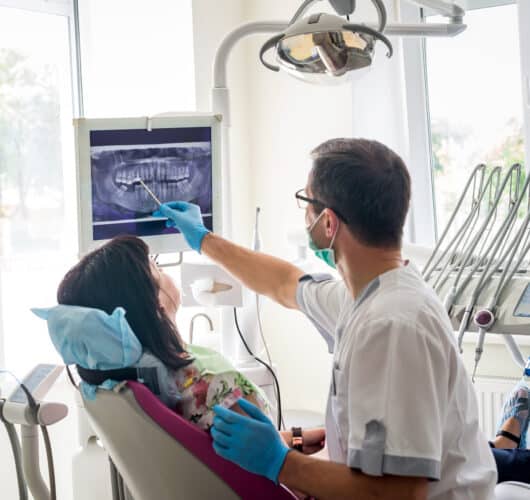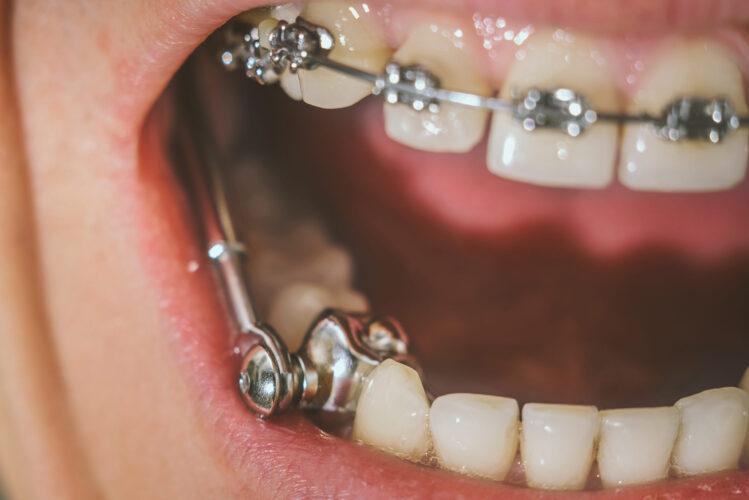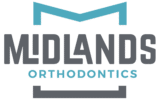Appliances
Making Orthodontic Treatment More Efficient

To achieve your perfect smile, most patients will need to wear some form of orthodontic appliances such as braces or a device known as a “functional appliance” that are used to correct more serious bite problems. Functional appliances work by using forces such as jaw growth and to naturally move and better align the jaw. Examples of functional appliances include the TAD expander, jaw and palatal expanders, the Herbst appliance and CS-2000 springs.
These devices are put in installed by your orthodontist and removed at the end of your treatment or before placing braces. Unlike braces, they are usually used during the early treatment phase of orthodontics as this is when the jaw is still growing. Instead primarily treating the teeth, they work by helping to re-orient the jaw in a way that is beneficial to bite development. Our doctor will recommend the device that helps treat your condition. However, one of the most commonly used devices is expanders.
Jaw/Palatal Expander
Most people think of braces as a way to straighten teeth, but orthodontic treatment can also be used to expand the jaw and palate. This is a common treatment for children who have difficulty breathing through their nose because it opens up the airway. Jaw and palatal expanders are usually used in early orthodontic treatment. In some cases, jaw and palatal expanders may be the only treatment necessary to correct the problem. However, in most cases, the patient requires further orthodontic treatment once the permanent teeth have erupted.
Palatal expanders are thin plates that fit over the top of the teeth and are attached to a screw in the middle. The screw is turned a little bit each day, which widens the space between the teeth. Palatal expanders come in a variety of different types, but all of them work by expanding the palate to create more space for the teeth. This helps to correct the misalignment and improve the bite.
Jaw expanders are similar, but they fit over the lower teeth and are attached to springs on either side. Jaw expanders are dental appliances that are used to correct a malocclusion or bad bite. There are a variety of different types of jaw expanders available, but all of them work by expanding the jaws to create more space for the teeth. This in turn helps to correct the misalignment and improve the bite. As the springs are turned, they push the lower jaw outwards, widening the space between the teeth.
TAD
A TAD, or Temporary Anchorage Device, expander is a device used to help correct orthodontic problems by expanding the upper jaw. It is a small, metal device that is inserted into the roof of the mouth and gently pushed outward to widen the palate. The expander is attached to a small screw that is turned periodically to increase the expansion.
TAD palatal expanders are usually used in children who still have some growing left to do. This is because jaws that are still growing are more responsive to the expansion. The main goal of using a TAD palatal expander is to create more space in the upper jaw for the teeth to move into. This can help correct alignment problems and improve the overall appearance of the smile. In addition, expanding the palate can also help improve breathing and speech.
Herbst Appliance
The Herbst appliance is a fixed orthodontic appliance used to align the jaw and bite issues such overbites and underbites. The device’s two metal brackets are bonded to the teeth, with a bar that connects the brackets. The bar is bent to fit the patient’s mouth, and it applies pressure to the teeth to correct the dental problem. This functional appliance works 24 hours a day to adjust jaw growth.
The appliance puts force on the lower jaw. At the same time, it pulls the upper jaw back resulting in a gradual alignment of the upper teeth and bottom jaw. Not only does this help create an attractive smile, but it can also help smooth the appearance of the jawline.

During treatment, the appliance is fixed to your child’s molars, so parents do not need to worry that they will lose or forget it. At each appointment, our doctor will check their progress. Sometimes “shims” may need to be added to the the appliance to help guide the jaw in the correct direction. If your child’s jaw also needs to be widened while wearing the Herbst appliance, we can do so by adding a special expansion mechanism.
CS-2000 Springs
Orthodontists have been using springs in braces for many years as a way to correct tooth alignment. The springs create tension on the teeth, which helps to move them into the correct position. The CS-2000 spring is made from a high-strength steel alloy. It is designed to be used with typical metal brackets and attaches to the upper and lower archwires. It is used to correct a Class III malocclusion, which is when the lower teeth are too far in front of the upper teeth.
One of the main advantages of the CS-2000 spring is that it is very thin and discreet. It does not take up a lot of space on the bracket, and it is less visible than other types of springs. This makes it a popular choice for patients who are concerned about the appearance of their braces. Another advantage of the CS-2000 spring is that it is very strong, making it an effective tool for correcting dental alignment problems. Overall, the CS-2000 spring is a good choice for patients who are looking for an effective and discreet way to correct their dental alignment.
